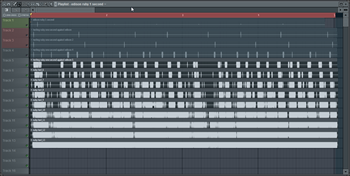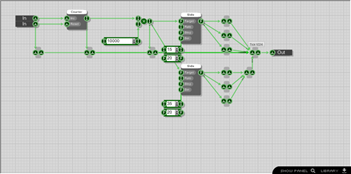So, I gave it some thought and it would make sense to be able to both fulfill My initial vision of having a slower style of pumping for a gain rider with an optional realtime decibel to averaging conversion.
And it's not too hard to do both.
So, Here's what I accomplished with Ruby:

So, first I compared realtime versus outputted ticks with a minisynth output to mono l&r. It was close enough that I decided it was worth tweaking. So, I kept multiplying each signal by 2 over and over until the output was consistent. I like the effect; It's very earthy.
And here's How I achieved that with a ruby tick and a bunch of playing with scaling.

It's certainly not perfect, but that was the whole point. I'll add another switch so that realtime and vintage mode can be selected. My father used to work with electronics. All in all I can tell You; Even if the capacitors and resistors which were used to run governors; They'd still only be at this level of efficiency. The only contradiction had been of course clockwork that was made with refined metals.
Because the oxide was wrought from the steel; Its movement was reliable and measurable, but capacitors and resistors of the day were still made with imperfect materials. Now they use carbon I believe which can be standardized.
Here's the latest schematic with that functioning and I'll get the realtime version up and going probably by tomorrow.
edit: OK, last updated version was too fast. And too many nyquists is too much of a good thing, OMG. I think realtime might actually hurt the ears due to exponential amplitude and average.
Glad nobody downloaded it, lol. This new version has 40 ms of de-zippers to counter-act the effect. Realtime? Be careful what You wish for. Have a listen in realtime and that's about 800-900 ticks per second; Just imagine if it was realtime.


